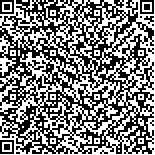徐胜,张艳,李露露,等.功能性电刺激手摇车训练对早期脑卒中患者上肢功能恢复的影响[J].中华物理医学与康复杂志,2022,44(8):685-689
扫码阅读全文

|
| 功能性电刺激手摇车训练对早期脑卒中患者上肢功能恢复的影响 |
|
| |
| DOI:10.3760/cma.j.issn.0254-1424.2022.08.003 |
| 中文关键词: 脑卒中 功能性电刺激手摇车 上肢运动功能 日常生活活动能力 |
| 英文关键词: Stroke Functional electrical stimulation Upper limbs Cycle training Upper limb motor function Activities of daily living MOTOmed |
| 基金项目: |
|
| 摘要点击次数: 4759 |
| 全文下载次数: 4797 |
| 中文摘要: |
| 目的 探讨功能性电刺激(FES)手摇车训练对早期脑卒中患者上肢运动功能和日常生活活动能力的影响。 方法 将早期脑卒中偏瘫患者60例按随机数字表法分为FES手摇车组(试验组)和MOTOmed运动训练组(对照组),每组患者30例。2组患者均采用常规康复治疗,试验组在此基础上增加FES手摇车进行训练,每日1次,每次20 min,对照组则增加MOTOmed运动训练系统治疗,每日1次,每次20 min。2组患者均连续治疗4周。于治疗前和治疗4周后采用Brunnstrom分期评估2组患者上肢和手的运动功能,并于治疗前和治疗1、2、3、4周后采用上肢简化Fugl-Meyer量表 (FMA-UE)和改良的Barthel指数(MBI)分别评估2组患者上肢的运动功能和日常生活活动能力。 结果 治疗4周后,2组患者上肢和手的Brunnstrom分期分别与组内治疗前比较,差异均有统计学意义(P<0.05),且试验组患者治疗4周后上肢(χ2=9.23,P<0.05)和手(χ2=15.91,P<0.05)的Brunnstrom分期均显著优于对照组治疗4周后。治疗1、2、3、4周后,2组患者的FMA-UE和MBI评分与组内治疗前比较,差异均有统计学意义(P<0.05),且试验组患者治疗1、2、3、4周后的FMA-UE和MBI评分均显著优于对照组同时间点,差异均有统计学意义(P<0.05)。 结论 FES手摇车训练可显著改善早期脑卒中患者的上肢运动功能和日常生活活动能力,且疗效优于MOTOmed运动训练系统。 |
| 英文摘要: |
| Objective To explore the effect of combining functional electric stimulation (FES) with upper limb cycle training in rehabilitating upper limb motor function and ability in the activities of daily living after a stroke. Methods Sixty hemiplegic stroke survivors were randomly divided into an experimental group and a control group. In addition to conventional rehabilitation therapy, the experimental group underwent 20 minutes of MOTOmed upper limb cycle training every day while receiving FES. The control group received only the 20 minutes of cycle training. Before and after 4 weeks, Brunnstrom staging was used to quantify hand and upper extremity functioning. The Fulg-Meyer assessment upper extremity scale (FMA-UE) and the modified Barthel index (MBI) were also used before the training and after 1, 2, 3 and 4 weeks of the treatments. Results After 4 weeks of treatment, significant differences were observed in the average BS scores of both groups compared with before the intervention. The average hand and upper limb stages of the experimental group were significantly better than the control group′s averages. Significant improvement was also observed in the average FMA-UE and MBI scores of both groups after only one week, with significantly greater improvement in the experimental group. Conclusions Supplementing upper limb cycle training with FES can significantly improve the upper limb motor function and ability in the activities of daily living of stroke survivors. It is more effective than the MOTOmed exercise alone. |
|
查看全文
查看/发表评论 下载PDF阅读器 |
| 关闭 |